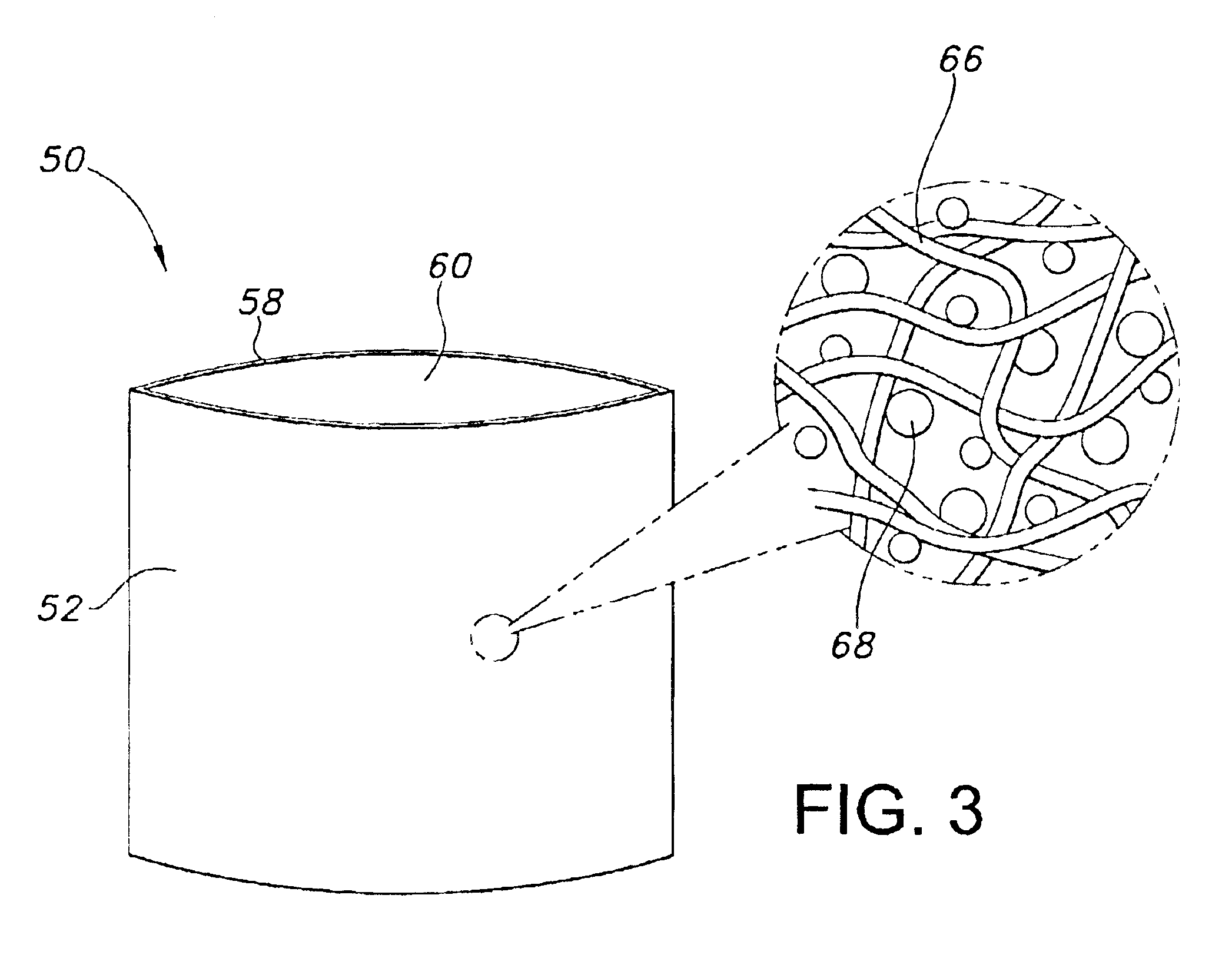Thermal therapy sleeve
a technology of thermal therapy and sleeves, applied in the field of cold or heat therapy, can solve the problems of inability to deliver or absorb heat for an extended period, many disposable thermal therapy products, and discomfort for users, and achieve the effects of reducing the effectiveness of instant chemical hot or cold packs, reducing the use of thermal therapy products, and reducing the use
- Summary
- Abstract
- Description
- Claims
- Application Information
AI Technical Summary
Benefits of technology
Problems solved by technology
Method used
Image
Examples
example 1
The ability to modulate the temperature of a chemical heat product using a PCM was demonstrated. In this example, the sleeve was constructed from a nonwoven material, as described below.
Preparation of Control Sleeve
Two pieces of a 2.0 ounces per square yard (osy) fine fiber polypropylene meltblown nonwoven material were laminated together to prepare the first layer of the control sleeve. A 12 in. (304 mm) by 12 in. (304 mm) Carver hot press (Carver model 1523) was used to laminate the materials together at a temperature of 145° C. and a pressure of 12,000 psi for 2 minutes. Another two pieces of the same material were laminated together in the same manner to prepare the second layer of the control sleeve. An ultrasonic bonder was then used to bond the two laminates on three sides to form the control sleeve. The resulting sleeve had a mass of about 7.0 g.
Preparation of Experimental Sleeve
Two pieces of a 2.0 ounces per square yard (osy) fine fiber polypropylene meltblown nonwoven mate...
example 2
The ability to modulate the temperate of a chemical pack using a PCM was demonstrated. In this example, the sleeve was constructed from a metallized film as described below.
Preparation of Control Sleeve D
Two pieces of a metallized plastic film laminate bag (SilverPAK® 2.5 mils (0.025 in. thickness) polyester barrier from Kapak Corporation of Minneapolis, Minn.) were sealed together using epoxy adhesive. Note that this sleeve did not have a pocketed laminate structure of control sleeve E and experimental sleeve F.
Preparation of Control Sleeve E
Two pieces of the same metallized plastic film laminate bag were laminated together to prepare the first layer of the control sleeve. The pieces were laminated using a 12 in. (304 mm) by 12 in. (304 mm) Carver hot press (Carver model 1523) at a temperature of about 135° C. and a pressure of about 10,000 psi for a duration of about 1 minute. Another two pieces of the same material were laminated together in the same manner to prepare the second ...
example 3
The ability to extend the therapeutic duration of a thermal therapy heat pack and modulate the experienced temperature using multiple PCM's was demonstrated.
To understand the effect of combining multiple PCM's within the thermal therapy sleeve, the PCM's were evaluated individually and in combination. The first PCM selected was octacosane (transition temperature of about 61° C., available from Aldrich Chemical under the catalog number O-50-4). The second PCM selected was eicosane (transition temperature of about 37° C., available from Aldrich Chemical under the catalog number 21,927-4).
Small pouches (about 4 in. (102 mm) by about 2 in. (51 mm) were made using two pieces of a metallized plastic film laminate bag (SilverPAK® 2.5 mils (0.025 in. thickness) polyester bar tier from Kapak Corporation of Minneapolis, Minn.). Each was filled with about 10 g of PCM in the liquid state. The first pouch contained octacosane (pouch H), and the second pouch contained eicosane (pouch I). The pouc...
PUM
 Login to View More
Login to View More Abstract
Description
Claims
Application Information
 Login to View More
Login to View More - R&D
- Intellectual Property
- Life Sciences
- Materials
- Tech Scout
- Unparalleled Data Quality
- Higher Quality Content
- 60% Fewer Hallucinations
Browse by: Latest US Patents, China's latest patents, Technical Efficacy Thesaurus, Application Domain, Technology Topic, Popular Technical Reports.
© 2025 PatSnap. All rights reserved.Legal|Privacy policy|Modern Slavery Act Transparency Statement|Sitemap|About US| Contact US: help@patsnap.com



